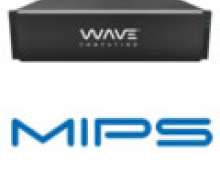
MIPS Goes Open Source
Wave Computing will open source its MIPS instruction set architecture (ISA) to accelerate the ability for semiconductor companies, developers and universities to adopt and innovate using MIPS for next-generation system-on-chip (SoC) designs.
MIPS Instruction Set Architecture and MIPS’ latest core R6 will be available in the first quarter of 2019, the company said.
Under the MIPS Open program, participants will have full access to the most recent versions of the 32-bit and 64-bit MIPS ISA free of charge – with no licensing or royalty fees. Additionally, participants in the MIPS Open program will be licensed under MIPS’ existing worldwide patents.
“Having spent years in the open source technology movement, I can attest to the hunger for community-driven solutions,” said Art Swift, president of Wave Computing’s MIPS IP Business. “However, until now, there has been a lack of open source access to true industry-standard, patent-protected and silicon-proven RISC architectures. The overwhelmingly positive response we have received thus far from customers on our MIPS Open initiative is an indication of the dramatic, positive impact we believe the program will have on the industry. We invite the worldwide community to join us in this exciting journey and look forward to seeing the many MIPS-based innovations that result.”
“The MIPS-based solutions developed under MIPS Open will complement our existing and future MIPS IP cores that Wave will continue to create and license globally as part of our overall portfolio of systems, solutions and IP. This will ensure current and new MIPS customers will have a broad array of solutions from which to choose for their SoC designs, and will also have access to a vibrant MIPS development community and ecosystem, said Lee Flanagin, Wave’s senior vice president and chief business officer.
Included in MIPS instruction sets are extensions such as SIMD (single instruction, multiple data) and DSP. Swift promised that MIPS will bring to the open-source community “commercial-ready” instruction sets with “industrial-strength” architecture. “Chip designers will have opportunities to design their own cores based on proven and well tested instruction sets for any purposes,” said Swift.
The industry standard MIPS ISA represents decades of innovation with over 8.5 billion MIPS-based chips having shipped in thousands of commercial designs to-date.
However, MIPS has struggled to build its ecosystem and generate momentum, and currently trails far behind Arm. Wave’s goal is to reverse a trend that looked for a long time like a downward spiral for MIPS.
The MIPS Open initiative will be moderated by Wave Computing and an Advisory Committee that will include OEMs, partners, universities and technology luminaries, according to Wave. The MIPS Open initiative will also include certified verification partners who will assist in ensuring compatibility of implementations and preventing architectural fragmentation.
MIPS’ reputation eroded in the past decade with the sale of patents after MIPS Technologies sold itself to Imagination Technologies in 2012. In parallel with its sale to Imagination, MIPS also entered into a separate agreement to sell patents to Bridge Crossing. Bridge Crossing got 498 of MIPS' 580 patent assets for gross proceeds of $350 million. MIPS, meanwhile, retained the remaining 82 patent properties directly relevant to the MIPS architecture and was also be granted a royalty-free, perpetual license to all of the patents sold to Bridge Crossing.
During Imagination's ownership, many of the MIPS patents were licensed back from Bridge Crossing, according to Wave.
Before Chinese industry groups in China jumped on RISC-V, China had been embracing MIPS. The Beijing-based Institute of Computing Technology (ICT) led several generations of the MIPS-based Godson chips. The Chinese government, through its Loongson-based supercomputing projects, maintained a steady interest in MIPS.
Although most fabless chip companies in China now focus on smartphones belonging to the Arm camp, BLX IC Design Corp. (Loongson), Action and Ingenic are still using MIPS.



















